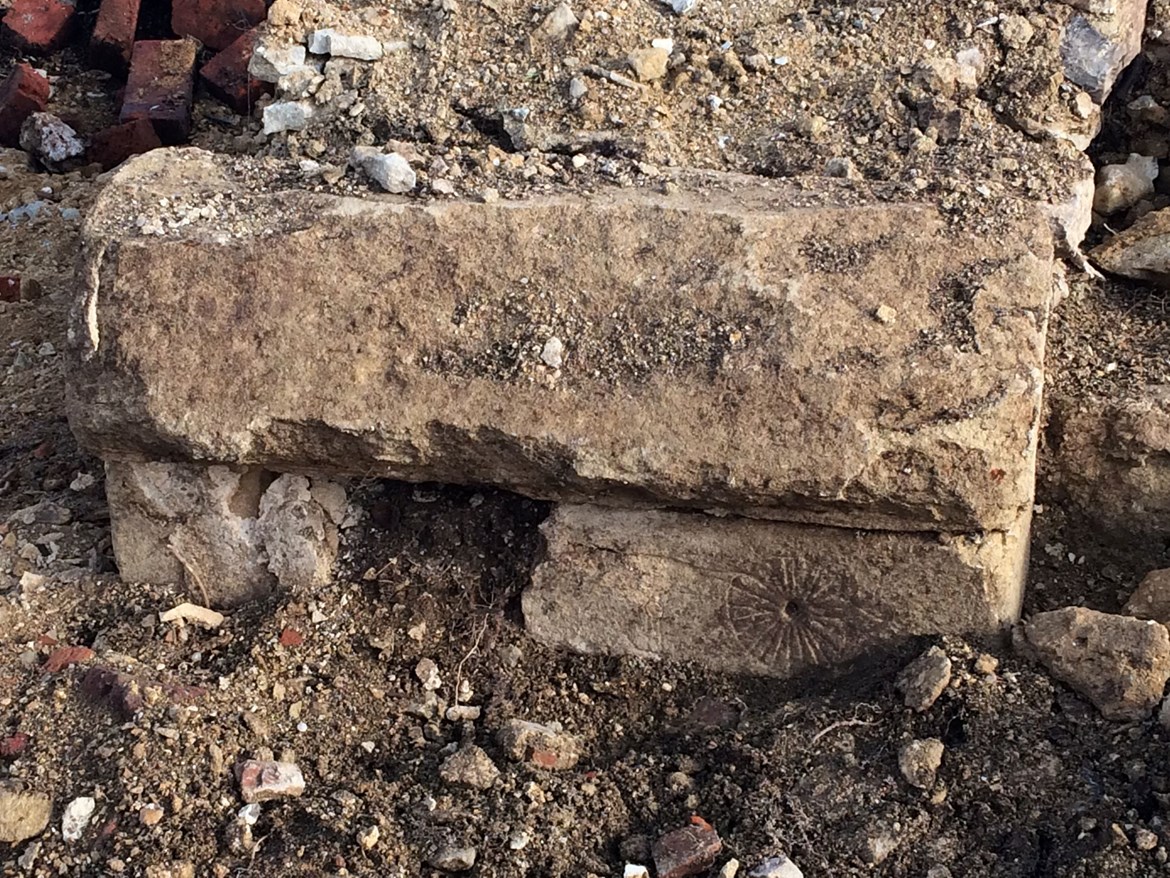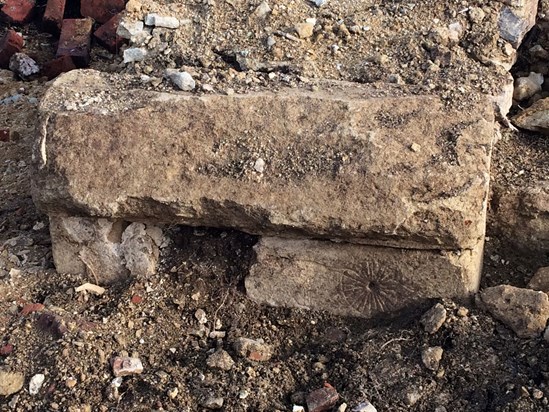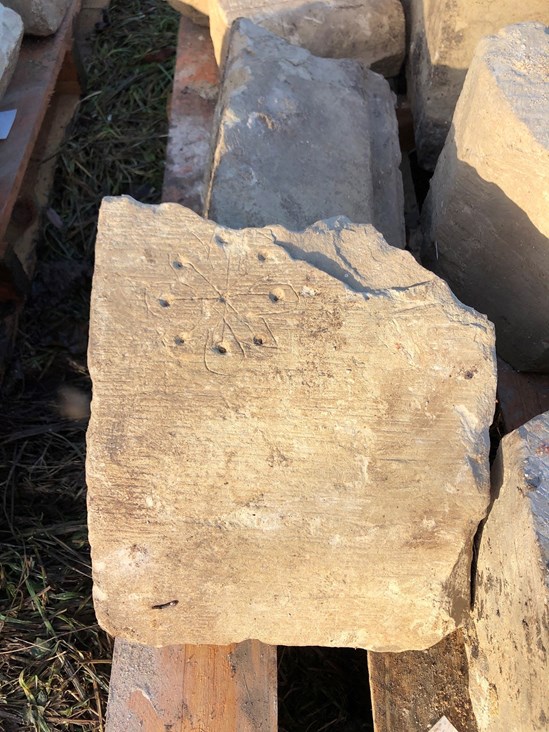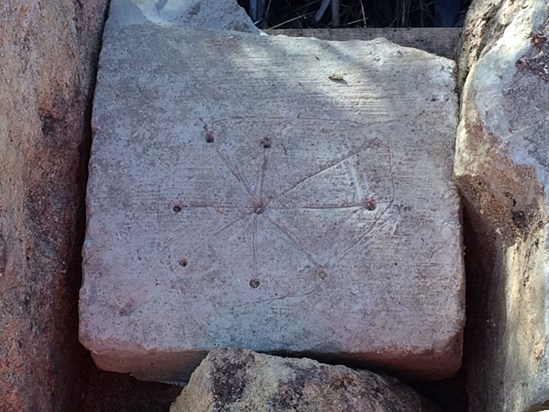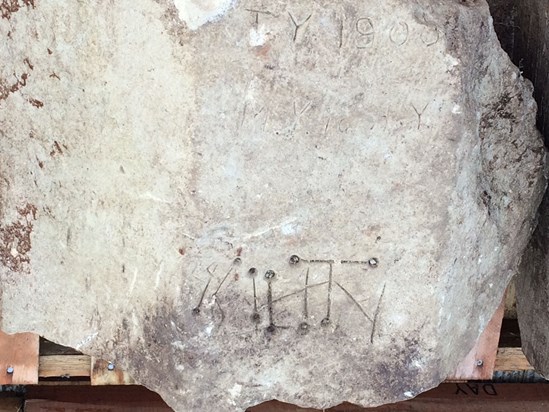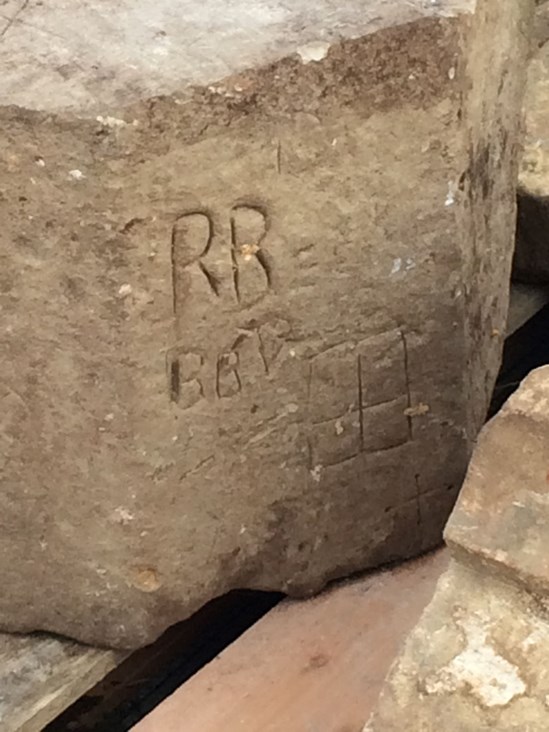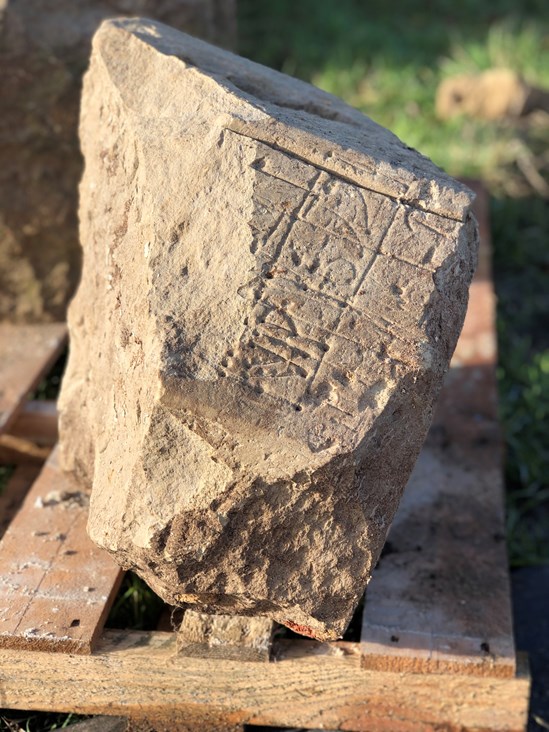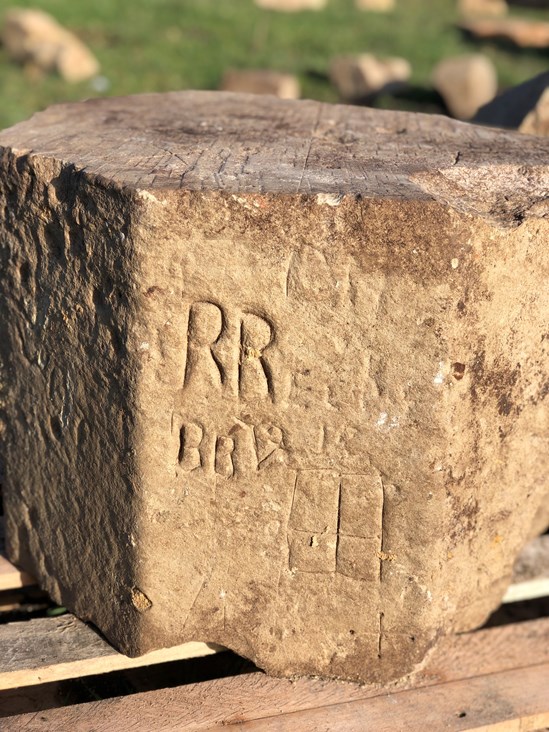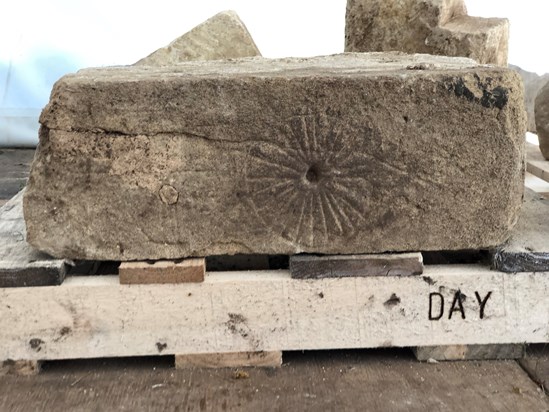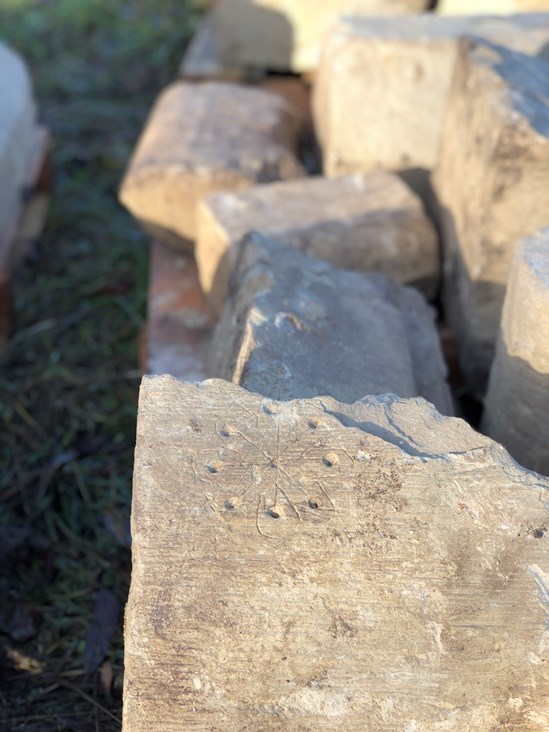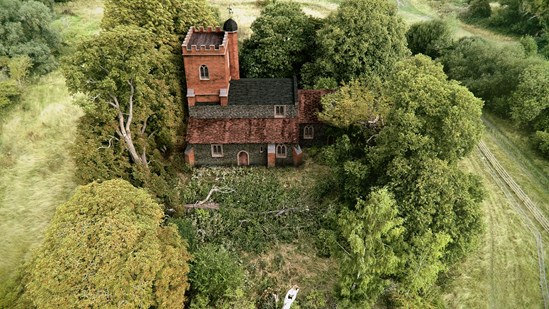Archaeologists working in Stoke Mandeville to prepare for HS2 have begun the excavation of the remains of the medieval church of St Mary. They have also discovered some unusual stone carvings, medieval graffiti and other markings.
Two stones with a central drilled hole from which a series of lines radiate in a circle have been uncovered at the site of St Mary’s. Historians consider these markings to be ‘witches’ marks, created to ward off evil spirits by entrapping them in an endless line or maze. There are several well-known examples of these across Britain both in churches as well as houses and sometimes even on furniture. However, they can also be interpreted as early sun dials, used by the church to divide up the day into morning prayer, midday prayer and evening prayer. These ‘scratch dials’ as they are known, are usually found close to the southern door of the church as it is a position better suited for a sun dial.
At St Mary’s, one example of the markings was found low down in the west buttress close to ground level which has led archaeologists to question its purpose. The position of the stone would have meant that it wouldn’t have served a purpose as a sun dial. This has left the possibility that it was there to ward off evil spirits or could have been a stone from a sun dial re-used as part of the church building.
Michael Court, Lead Archaeologist at HS2 Ltd said:
“The archaeology work being undertaken as part of the HS2 project is allowing us to reveal years of heritage and British history and share it with the world. Discoveries such as these unusual markings have opened up discussions as to their purpose and usage, offering a fascinating insight into the past.”
Archaeologists from Fusion JV working on behalf of HS2 Ltd at the site were also given the rare opportunity to excavate and carefully deconstruct the remains of the medieval church – something that has not been done in Britain since the 1970s. The old church was built to serve the manor house and was located some way from the village centre. It was replaced in 1866 by a new church built closer to the village.
Though it was known that the church had been demolished, the method and extent of demolition had not been recorded and it was therefore a surprise to the archaeologists to discover, that beneath the rubble the church survived to a height of almost 5ft with floors intact.
Detailed research into the structure of the church has allowed archaeologists to piece together a history of the development of St Mary’s. The church started off as a chapel built in about 1070, shortly after the Norman Conquest and may have been at first the private chapel belonging to the lord of the manor at that time. The church was soon extended, and an aisle added in the 1340s. These new additions seem to mark a transition from a chapel used for private prayer to a church that was used by the local villagers.
Work to dismantle and excavate the church will continue into next year and archaeologists are looking forward to answering many more questions concerning the church and its architecture including discovering whether there may be a Saxon church lying beneath its floor.
Andrew Harris, Historic Environment Manager from Fusion JV said:
“The HS2 excavation work at Stoke Mandeville has allowed our team of archaeologists to uncover a unique site and get a once in a lifetime opportunity to examine the story of how the church at St Mary’s developed. The levels of preservation of some of the features of the church are surprising given its age, and we look forward to continuing this work and being able to share our discoveries with the local communities.”
HS2 is taking part in this year’s Festival of Archaeology and is hosting three webinars, aimed at 16-25 year olds, focused on inspiring the next generation of archaeologists in Britain. Held between 24th October and 1st November, the Council of British Archaeology event will offer hundreds of opportunities for people to get involved. HS2, and its contractors leading on the project's unprecedented programme of archaeology, will be sharing their experience and findings. HS2’s events will focus on some of the exciting discoveries of Britain’s past which have already been found during the works such as these discoveries at Stoke Mandeville. Interest in the webinars can be registered at: https://www.eventbrite.co.uk/o/high-speed-two-community-engagement-team-27591966155
